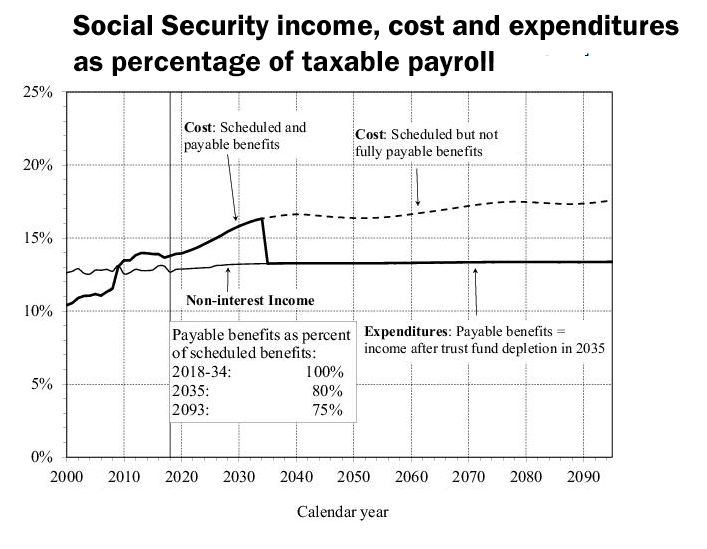
Roth IRA calculator defaults at 6% rate of returns
The default rate for return in the Roth IRA calculator calculates at 6%. However, you can adjust this to reflect your expected returns. The calculator does not take into account your spouse's employer sponsored retirement plan. After income taxes and tax-deductible contribution, the total amount in your account will be added. It also includes tax savings you can reinvest.
The Roth IRA Calculator will calculate your maximum contribution annually based upon your tax filing status. Using the calculator defaulted to 6%, you can compare your projected Roth IRA account balance at retirement to your projected taxable account balance.
Traditional IRA calculator assumes that you are "Married filing separately"
If you're looking to contribute to a Traditional IRA, you need to know how much you can contribute each year. Your annual income determines how much you can contribute tax-deferred each year. Maximize your contributions by contributing at least the maximum amount each calendar year. This includes a catch-up contribution once you're over 50.

If you're married, the traditional IRA calculator assumes that you are "married filing separately," which means that your spouse isn't included on your return. This allows you to easily compare IRAs that have different tax rules. If you are married and you make a single contribution to an IRA, you might find that the tax on your contribution will be reduced by one rather than two.
SEP IRAs require no catch-up contributions
SEP IRAs don't allow catch up contributions for those over 50, unlike traditional IRAs. However, some employers may allow catch-up contributions if their employees make a traditional IRA contribution. The amount of employees' compensation during the year is the limit for the catch-up contribution.
You must have earned at least $100,000 the year before you are eligible. The amount of catch-up contribution you can make is the lesser of your salary or your employer's contribution. This catchup contribution is optional and can be made in the next year. Even if your age is under 50, catch-up contributions can be made. However, you will need to take out your funds before reaching 70 1/2. SEP IRAs cannot make loans. Uni-K plans can allow loans. However, the IRS has strict guidelines. In addition, some plans may charge an administrative cost for loan initiation.
IRAs can be tax-deferred
The best thing about an IRA is the fact that you don't pay taxes on either your earnings or withdrawals unless your investment is sold. It allows you to dispose of investments that have appreciated and avoid capital gains tax. You will need to pay transaction costs if your investments are sold. Asset diversification is important because of this. You should not invest all your money on stocks and cash. As inflation is a major threat to your investments, you need to diversify your portfolio.

Traditional IRAs allow for you to deduct your contributions up to the amount of your contribution. These deductions, however, are limited and will decrease as your income grows. Most employers offer a retirement plan that is qualified as a qualified IRA. If you don't have access to a workplace retirement plan, you can take advantage of the deduction by contributing to an IRA yourself. To qualify, however, you must have a modified adjusted gross income below $65,000
In retirement, IRA distributions will be exempted from taxes
Traditional IRAs are an excellent way to accumulate tax deferred retirement savings. Contributions are made on a pre-tax basis, and withdrawals are tax-free if you are over 59 1/2. When withdrawing money, there are certain rules. You must withdraw at least 10% each year. These rules must be followed or you could face a 50% tax.
You should be able to understand the IRA distributions process if you're under the age of 59 1/2. For example, suppose you are taking a $10,000 distribution from your IRA each year. This withdrawal is not subject to tax for the first 120-days. After that, you will need to wait at most 120 days before changing your payments.
FAQ
How to beat inflation with savings
Inflation is the rise in prices of goods and services due to increases in demand and decreases in supply. It has been a problem since the Industrial Revolution when people started saving money. Inflation is controlled by the government through raising interest rates and printing new currency. However, you can beat inflation without needing to save your money.
Foreign markets, where inflation is less severe, are another option. Another option is to invest in precious metals. Gold and silver are two examples of "real" investments because their prices increase even though the dollar goes down. Investors who are concerned about inflation are also able to benefit from precious metals.
What is retirement plan?
Retirement planning is an essential part of financial planning. It helps you plan for the future, and allows you to enjoy retirement comfortably.
Retirement planning includes looking at various options such as saving money for retirement and investing in stocks or bonds. You can also use life insurance to help you plan and take advantage of tax-advantaged account.
What is risk management in investment administration?
Risk management refers to the process of managing risk by evaluating possible losses and taking the appropriate steps to reduce those losses. It involves the identification, measurement, monitoring, and control of risks.
Any investment strategy must incorporate risk management. The goal of risk management is to minimize the chance of loss and maximize investment return.
These are the key components of risk management
-
Identifying the risk factors
-
Monitoring and measuring the risk
-
How to manage the risk
-
Manage your risk
Do I need to pay for Retirement Planning?
No. No. We offer free consultations to show you the possibilities and you can then decide if you want to continue our services.
How to Choose An Investment Advisor
Selecting an investment advisor can be likened to choosing a financial adviser. Experience and fees are the two most important factors to consider.
This refers to the experience of the advisor over the years.
Fees represent the cost of the service. These costs should be compared to the potential returns.
It is crucial to find an advisor that understands your needs and can offer you a plan that works for you.
What Are Some Examples of Different Investment Types That Can be Used To Build Wealth
There are several different kinds of investments available to build wealth. Here are some examples.
-
Stocks & Bonds
-
Mutual Funds
-
Real Estate
-
Gold
-
Other Assets
Each of these has its advantages and disadvantages. Stocks and bonds are easier to manage and understand. However, they are subject to volatility and require active management. However, real property tends better to hold its value than other assets such mutual funds or gold.
It's all about finding the right thing for you. To choose the right kind of investment, you need to know your risk tolerance, your income needs, and your investment objectives.
Once you've decided on what type of asset you would like to invest in, you can move forward and talk to a financial planner or wealth manager about choosing the right one for you.
Statistics
- As of 2020, it is estimated that the wealth management industry had an AUM of upwards of $112 trillion globally. (investopedia.com)
- Newer, fully-automated Roboadvisor platforms intended as wealth management tools for ordinary individuals often charge far less than 1% per year of AUM and come with low minimum account balances to get started. (investopedia.com)
- A recent survey of financial advisors finds the median advisory fee (up to $1 million AUM) is just around 1%.1 (investopedia.com)
- If you are working with a private firm owned by an advisor, any advisory fees (generally around 1%) would go to the advisor. (nerdwallet.com)
External Links
How To
How to become a Wealth Advisor?
A wealth advisor can help you build your own career within the financial services industry. This job has many potential opportunities and requires many skills. If you have these qualities, then you can get a job easily. A wealth advisor is responsible for giving advice to people who invest their money and make investment decisions based on this advice.
You must choose the right course to start your career as a wealth advisor. It should cover subjects such as personal finances, tax law, investments and legal aspects of investment management. And after completing the course successfully, you can apply for a license to work as a wealth adviser.
These are some ways to be a wealth advisor.
-
First, it is important to understand what a wealth advisor does.
-
You should learn all the laws concerning the securities market.
-
It is important to learn the basics of accounting, taxes and taxation.
-
After completing your education, you will need to pass exams and take practice test.
-
Final, register on the official website for the state in which you reside.
-
Apply for a license for work.
-
Get a business card and show it to clients.
-
Start working!
Wealth advisors are typically paid between $40k-60k annually.
The size of the business and the location will determine the salary. The best firms will offer you the highest income based on your abilities and experience.
In conclusion, wealth advisors are an important part of our economy. It is important that everyone knows their rights. You should also be able to prevent fraud and other illegal acts.